Machine Learning: A new approach to Pharma Sales Force Effectiveness

How to leverage field force knowledge to increase productivity
The field force is our major asset that connects the company with the market and the prescribers.
Business Intelligence dashboards just focus on performance KPIs (Sales, Growth, Market Share) and CRM KPIs (Calls, coverage, frequency by tiers and specialties).
Nevertheless, sales teams have invaluable qualitative information that never gets into the CRM, and to make things worse when we have a large sales team, the qualitative knowledge is isolated regionally.
Capturing qualitative data is cumbersome but we can derive it connecting the dots between effort and outcome.
By using machine learning techniques we can discover hidden patterns from sales reps behaviours that maximize productivity, optimize call frequencies, know what event types are effective for every HCP specialty and build best practices for the whole team.
The Challenges
Pharma companies are committed to being more customer-centric.
Nonetheless, the tactical focus of call planning & investments are traditionally done with matrices by tiers. This gives us a reductionist vision of our HCP files by “potential” and “affinity/priority” and leads to the loss of invaluable insights.
In addition, a growing number of sales force teams have been downsized in recent years. Therefore, taking the customer-centric route with fewer reps increases the importance of face-to-face call effectiveness.
Although digital interactions (e-detailing) are becoming extended practice, their impact is not enough to ensure effective interactions with the healthcare professionals, so finding the right mix between F2F & digital is fundamental to sales force effectiveness.
What we should aspire to
- Individualized data-driven approach to call and event planning, based on expected value rather than business rules
- Know the Call Frequency saturation curves, based on insights regarding call sensitivity for every different Accounts/Bricks group and HCP specialties
- Account prioritization, based on evidence and the opportunity to capture
- Identify which kind of Events and on what types of accounts maximize productivity
- Identify the optimal balance between F2F and Digital
Until now, we did not have the technology that allowed greater granularity in the call planning’s focus but Machine Learning allows us to identify hidden patterns from many more variables.
That provides valuable insights which will guide us to more productive future call & event plans with improved outcomes.
Proposed Methodology
Data Collection (Account / Brick granularity)
- Market potential
- Sales
- HCP Call frequency for each Specialty/Tier
- (Optional) HCP Digital interactions
- (Optional) Event Attendees / Delivered samples
Goal definition
- What is the account/brick behaviour that we want to maximize? (Growth, Capture ratio of new market units…)
Clustering
- As we don’t have the complete features that impact on account performance (Visa, Protocols, Rep Personal affinity with HCPs) we must split data points using derived indicators (Market Share, Sales Percentile ...)
- Helps to control the model variance by finding patterns between accounts at the same business status
Modelling
- Identify call frequency saturation curves for each account cluster by HCP specialty/tier
- Apply predictive model to obtain goal achievement probability
- Add features that could enrich model accuracy (Events, Samples…)
Recommendations to the Field Force
- Prioritize accounts based on expected progress, showing the recommended new call plan frequencies
- Show the new additional workload recommended by the model and where reps can save calls to invest in more profitable accounts and HCP target specialties
Impact Analysis
- Compare historical sales trend with the new product sales after the new ML-based call plan was deployed
Account Clustering
Before applying Machine Learning to find out hidden patterns, we must group bricks/accounts based on their current status (e.g. Revenue percentile vs Opportunity to capture) to minimize model variance.
A BCG matrix variant fits very well for this purpose:
This BCG matrix defines four quadrants that qualify our customers using Pareto Law (80/20) for axis cut-outs.
Stars (80% Sales & 80% Opportunity)
- High revenue & High potential growth → All-in, increase call frequency until reaching saturation point
Cash Cows (80% Sales & 20% Opportunity)
- High revenue, low potential growth → Maintain tactic, adjust call frequencies below saturation curves
Question Marks (20% Sales & 80% Opportunity)
- Low revenue, high potential growth
- Need deeper analysis
- Why aren’t we reaching an average market share?
- Competitors, HCP File misaligned, Not reaching call plan frequency? Vacant territories?
- Market Access issues?
Dogs (20% Sales & 20% Opportunity)
- Low revenue, high market share, there is no room for growth. These accounts are the candidates to decrease Call frequency, diverting these calls to accounts with higher growth potential
Call Frequency saturation curves by Specialty/Tier
Once we have our accounts clustered by business status, we can apply a gradient boosting model to calculate the saturation curves for every target specialty and the optimal attendees by each kind of event.
Optimal frequencies to reach the defined goal
The model is capable of identifying which patterns maximize the probability to achieve the goal and compare them to what we are actually doing.
Recommendations to the Field Force
As we have established the optimal frequencies to achieve the goal and the average outcome of the accounts working with this pattern, we can prioritize the accounts/bricks by the opportunity to capture as well as the effort needed.
Conclusion
This new approach to Sales Force Effectiveness allows us to take advantage of the knowledge of the sales team and to spread the best practices learnt to the whole company.
Furthermore, for every account, it can identify which specialties we must focus our efforts on to maximize productivity, optimize call frequencies and distinguish between events and digital interactions that are boosting our performance and the ones which are not being as effective.












